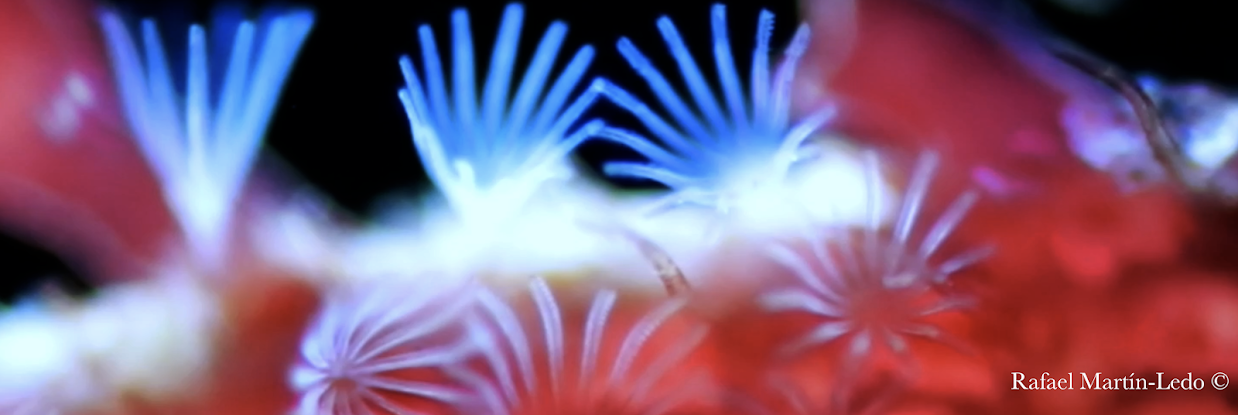Ophiuroidea – Hydrozoa
Ophioplinthus relegata : mutualist symbiont
Hydractinia sp : mutualist symbiont
Hydractinia sp : mutualist symbiont
Ophioplinthus relegata (Koehler) with Hydractinia sp
One of the most beautiful symbiosis observed in the brittle stars is that of an ophiuroid covered with “flowers” (although they are carnivorous). The colonial hydrozoan Hydractinia vallini Jaederh places its hydrorhiza and polyps between and over the plates of Ophioplinthus relegata (Koehler, 1922).
1. Gastrozooids 2. Gonozooid 3. Hydrorhiza
Polyps, gastrozooids with their tentacles and globose gonozooids are located mainly in the periphery of the disc and on the side parts of the arms.
The hydrorhizas are situated between interventrales plates, as well as in the characteristic jaw depression of Ophioplinthus relegata, which also can give a shelter to a polyp. The dorsal part of the disk is generally free.
The hydrorhizas are situated between interventrales plates, as well as in the characteristic jaw depression of Ophioplinthus relegata, which also can give a shelter to a polyp. The dorsal part of the disk is generally free.
For Svoboda et al (1997), the ophiuroid transports the hydractinia to the new food resources and keeps it away from the sediment that would collapse it, while the hydractinia defends the brittle star from potential predators, which is similar to the symbiosis of gastropods with cnidarians, a mutualistic type of relationship.
1. Gastrozooid 2. Gonozooid 3. Hydrorhiza
In excavated jaw area of some specimens appear polyps which are larger than the rest of polyps presented in the same ophiuroid. Such specimens have very few polyps in the areas where they normally are, such as the periphery of the disc. The proximity to the mouth of the brittle star induces me to think that hydroids can feed on the remains of the food that fall off when the ophiourid is eating (commensalism), or even that it could be a case of kleptoparasitism.
Specimens conserved in 70% ethanol, all photographs were made in ethanol.
Collected by Pablo J. González-López. Cruiser ANTARKTIS XXIII/8 Polarstern
Identified by Rafael Martín-Ledo.
The study was made using Motic SMZ-168 TL stereo microscope.
The study was made using Motic SMZ-168 TL stereo microscope.
References
Svoboda S, Stepanjants S, Smirnov I (1997) Two polar Hydractinia species (Cnidaria), epibiotic on two closely related brittle stars (Echinodermata): an example for a taxonomic and ecological bipolarity. Antarctic communities: species, structure, and survival edit Battaglia B ,Valencia J, Walton DWH Scientific Committee on Antarctic Research 22
July 2010
July 2010





No hay comentarios:
Publicar un comentario
Tus preguntas y comentarios son bien recibidos. Your questions and comments are welcome